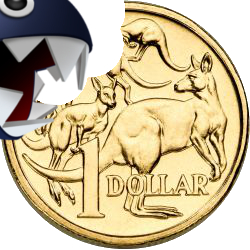Budget sleeps on bracket creep
 This week’s budget announcement ignored a giant factor, one that will provide vast amounts of the revenue the Government needs to fulfil its optimistic growth figures.
This week’s budget announcement ignored a giant factor, one that will provide vast amounts of the revenue the Government needs to fulfil its optimistic growth figures.
The Government’s tables predict an increase in personal tax collections of more than 7 per cent per year: from 11 per cent GDP in 2014-15 to 12.1 per cent in 2018-19.
It says overall economy will grow by 2.5 per cent in 2014-15 and 3.25 per cent in 2016-17, while participation rates remain steady at 64.75 per cent.
It leaves some wondering where the increase will come from. The answer: bracket creep.
Bracket creep happen when incomes rise but tax thresholds stay lower, which mean the increased wages are being taxed at a higher rate.
In this way, taxpayers pay more tax without any real increase in their income.
One obvious solution to the policy of taking in more revenue by doing nothing is to link income tax brackets to the rate of inflation.
Australia did this from 1976 to 1981, when the Fraser Government moved to half-indexation, and then abandoned automatic indexation completely.
Since then, governments have preferred to legislate changes to tax brackets periodically, sometimes combined with changes to the tax rates.
Recently, tax thresholds have been increased each year from 2002-03 to 2010-11, with the highest tax threshold now applying at 224 per cent of the average full-time weekly earnings.
But the Treasury says occasional threshold adjustments cannot continue.
The Intergenerational Report says bracket creep is a limited source of revenue, and true revenue growth must come from increased productivity.
It is an idea fleshed-out in the Re:Think discussion paper, which discusses the implications of bracket creep.
The Re:Think paper says if nothing is done, the average tax rate paid by a person on average wages and on 1.5 times the average wage will creep up each year.
The discussion paper asks the following questions:
- What should our individuals income tax system look like and why?
- At what levels of income is it most important to deliver tax cuts and why?
“Bracket creep is an important part of this discussion. Bracket creep increases taxation by stealth,” Associate Professor Helen Hodgson from the Curtin University Law School writes in an article for The Conversation.
“We can debate whether taxes should be higher to fund expenditure, or lower to improve rewards for labour, or even whether the system is progressive enough, but the tax system should be transparent.”








 Print
Print